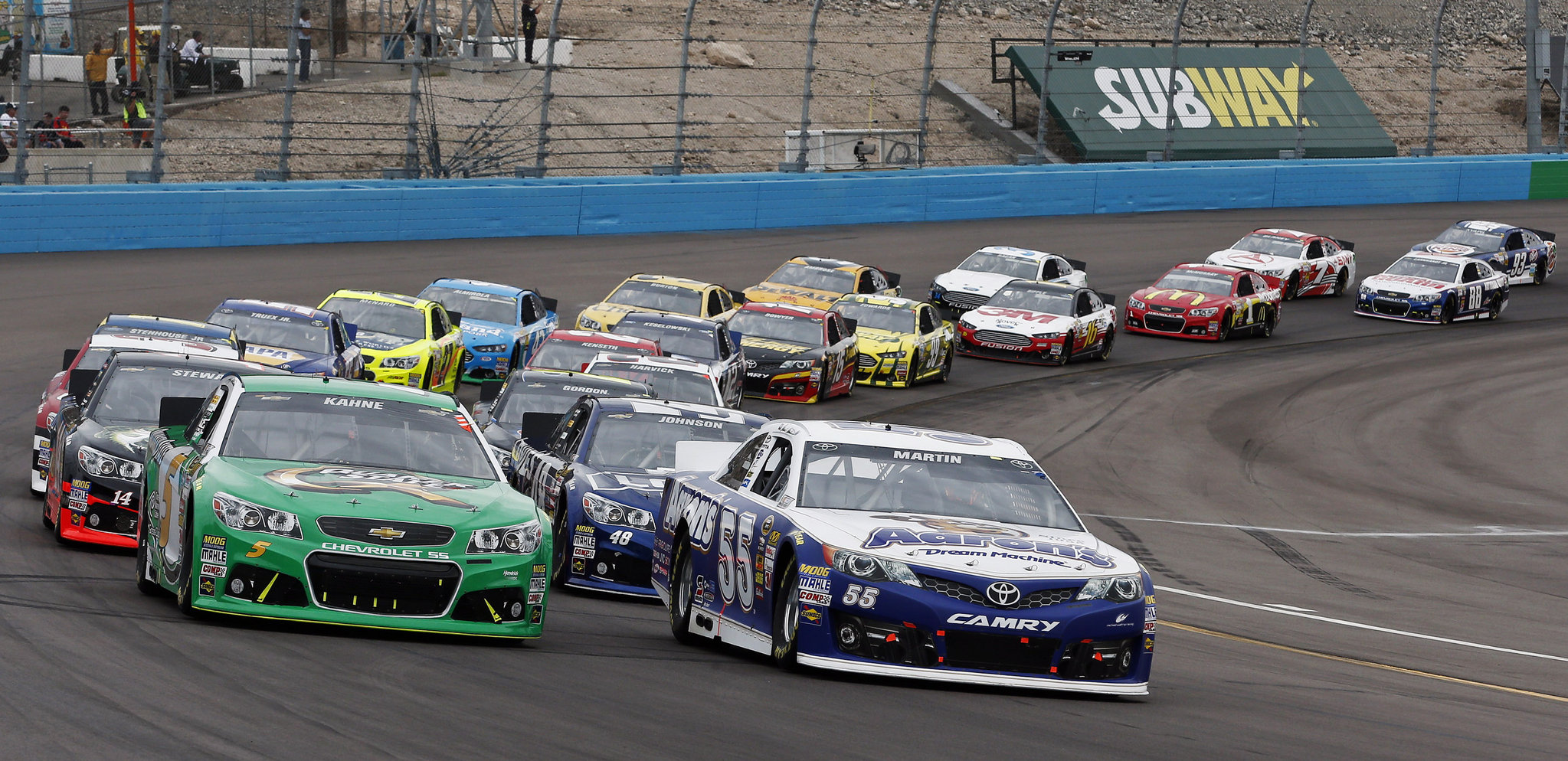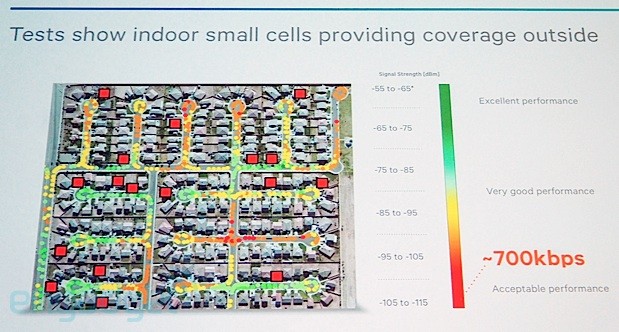SAN DIEGO — March 05, 2014 — Qualcomm Incorporated (NASDAQ: QCOM) today announced that its subsidiary, Qualcomm Technologies, Inc., in cooperation with Sprint Corporation and NASCAR, demonstrated the second phase of an over-the-air trial of an LTE TDD hyper-dense small cell network at the Phoenix International Raceway. The trial took place March 1-2, 2014 during the NASCAR Sprint Cup Series March Phoenix Race.
Phoenix International Raceway was identified as an ideal venue to conduct Qualcomm Technologies’ hyper-dense small cell network trial due to the large fan attendance during NASCAR races, the challenging radio frequency (RF) conditions, and the high mobile data demand during NASCAR events. As part of the trial, Qualcomm Technologies installed 31 small cell base stations in the garage area of the Phoenix International Raceway in order to test density limits, measure network performance capabilities and quantify the potential impact on users’ mobile experiences. This hyper-dense network demonstration, built with Airspan’s AirSynergy 2000 LTE-Advanced Pico Base Stations, is powered by Qualcomm Technologies’ small cell chipsets and UltraSON (Self Organizing Network) technology. The hyper-dense network has an equivalent density of 1,000 cells per km2 operating on Sprint’s band 41 LTE-TDD spectrum.

Over-the-air trial took place at the 2014 NASCAR Sprint Cup Series March Phoenix Race
In preparation for the anticipated 1000x increase in data traffic this decade, Qualcomm is leading the charge to maximize the efficiency of limited licensed spectrum. In the Phase 1 trial completed in November 2013, Qualcomm Technologies showcased UltraSON’s ability to improve wireless data performance and quality of service in hyper-dense small cell networks while significantly reducing signaling load to the network. In the phase 2 trials, Qualcomm Technologies demonstrated significant capacity gains with hyper-dense small cell networks compared to existing large area cellular technology, while providing robust user experiences across the whole trial area with UltraSON.
“Qualcomm Technologies thanks Sprint, NASCAR, and Phoenix International Raceway for the opportunity to test our small cell products in the living lab of a live NASCAR event that brings together so many fans into a complex and challenging wireless environment,” said Dan Rabinovitsj, senior vice president, Qualcomm Atheros. “This trial of a hyper-dense small cell network allowed us to showcase how our silicon and software solutions, including UltraSON software, improve the aggregate throughput of a cellular network, and reduce frequent handovers and signaling load to the core network.”
While traditional macro cell towers excel at providing wide area coverage, small cell deployment is designed to offer a more cost-effective solution to deliver high levels of mobile data capacity in both indoor and outdoor venues, with the added benefit of exceptional performance in areas of dense usage like shopping centers, hospitality venues, and sporting events like NASCAR races.
“Small cells will play a critical role in Sprint’s network strategy,” said Iyad Tarazi, vice president of network, Sprint. “NASCAR is one of Sprint’s most important sponsorships, so we are thrilled to help bring this technology trial to Phoenix International Raceway in collaboration with Qualcomm Technologies.”
“NASCAR is one of the most challenging environments for wireless data delivery due to a highly dynamic wireless environment and very high demand for data capacity,” said Steve Worling, senior director of IT, NASCAR. “We are constantly evaluating next-generation technology that can enable better on-track experiences for our fans and teams. Small cells are compelling given their low installation costs, modest physical footprint, and potential to relieve the pressure put on the macro networks during the race from data hungry fans.”

“Our relationship with Qualcomm Technologies has allowed Airspan to provision and showcase best-in-class pico cells,” said Airspan Networks' CEO, Eric Stonestrom. “This test represents a world’s first in the nascent urban small cell segment and will showcase our small cell solution in even the most extreme deployments. UltraSON, a fundamental building block for next-generation networks, is key to our improved performance.”
About Qualcomm Incorporated
Qualcomm Incorporated (NASDAQ: QCOM) is a world leader in 3G, 4G, and next-generation wireless technologies. Qualcomm Incorporated includes Qualcomm’s licensing business, QTL, and the vast majority of its patent portfolio. Qualcomm Technologies, Inc., a wholly-owned subsidiary of Qualcomm Incorporated, operates, along with its subsidiaries, substantially all of Qualcomm’s engineering, research and development functions, and substantially all of its products and services businesses, including its semiconductor business, QCT. For more than 25 years, Qualcomm ideas and inventions have driven the evolution of digital communications, linking people everywhere more closely to information, entertainment, and each other. For more information, visit Qualcomm’s website, OnQ blog, Twitter, and Facebook pages.
Advertisement
Learn more about Electronic Products MagazineQualcomm





